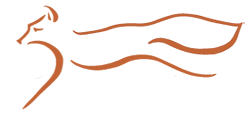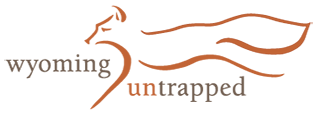Advocating for Lions, Bears, Wolves and All Wildlife
Advocating for Lions, Bears and Wolves
Posted on October 8, 2017 by Leslie Patten
As wolf hunting re-emerges this month in Wyoming, and grizzly bear hunting is now being considered with their new delisted status, I thought it was a good time for a blog post on how Game and Fish Agencies are influenced in their decision processes. So called ‘non-consumptive users’–those who do not hunt nor fish (or rarely so)–have no real voice in state wildlife management because they are excluded from being a funding source. Few people understand the mechanics of wildlife management. To that end, this blog post is a short excerpt from my upcoming book on mountain lions, with the working title Thinking Like a Mountain Lion: Tracking a Lion’s Soul through Science and Story. Although the excerpt references lions, the fundamentals apply to all wildlife, including trophy game animals like bears and wolves.
As a simple introduction to the post below, one has to understand the hierarchy of wildlife management. Under United States common law, the people own the wildlife, while the states hold them in trust for citizens. The lines of jurisdictional authority are complex and highly political. But, in general, state legislatures pass wildlife laws, state game commissions interpret the laws, and the state wildlife agencies implement and enforce the laws. The governor usually appoints state wildlife commissioners for a set period of time, which means they are not elected by the public, and therefore do not have to be responsive to the wide range of public opinions on mountain lion management. The commission establishes hunting seasons, harvest quotas, and management actions. Mission and mandate statements for these state commissions are broad, allowing them to accommodate non-scientifically supported decisions, such as drastically reducing cougar numbers in order to enhance deer populations for recreational hunting. These kinds of decisions fit neatly in with where the majority of the funding for these agencies comes from—hunting and fishing licenses. In other words, non-consumptive users, people who just like to watch wildlife and take photos, have little say in state wildlife management.
I first met David Mattson through his advocacy work for grizzly bears in the Greater Yellowstone. What I didn’t know then was that he had also participated in over ten years of research in the Southwest focused on puma ecology and puma-human interactions. Both of these experiences with megafauna have shaped his observations on state predator management and its interactions with the public.
Mattson points out that although changes in attitudes towards predators have been incorporated into state game agency policy, the essential structure and funding of the agencies themselves has not changed. What he calls the “utilitarian/dominionistic” worldview has dominated these wildlife agencies since the early 1900s, where domination and utilitarianism is the goal. Over the last forty or so years, a new approach among the public has emerged which values nature for its intrinsic beauty, focusing on ecological connection, scientific advancements, and the idea that humans have a moral responsibility to protect the earth and its wildlife. These two stances are diametrically opposite, creating increasing public demands on the agency management.
Yet, only one set of people holds power over wildlife decisions. Wildlife commissions and employees in wildlife management agencies, are almost all self-identified hunters and supporters of groups that support hunting. Funding sources for these agencies comes primarily from hunters, trappers, anglers, and gun owners through licenses sales and other fees. In Wyoming, for instance, 80% of their Game and Fish funding is from sales of hunting and fishing licenses. North Dakota’s entire budget for wildlife management is sourced from these user fees. The Pittman-Robertson (or Federal Aid in Wildlife Restoration Act) places an excise tax on the sale of firearms, ammunition products, and archery equipment. This act gives additional monetary support to wildlife agencies to the tune of millions of dollars a year from lethal weapons sales. The funding bar is heavily weighted in favor of hunting opportunity.
Mattson writes that having a homogeneous group in charge of wildlife issues makes for a uniform world-view, one that tends to be sympathetic towards that particular constituency—the hunting crowd becomes the ‘in-group’ with preferential treatment, with livestock growers a secondary component.
Wildlife are considered public trust assets. What that means is that they are owned by no persons, but held ‘in trust by governments for the benefit of present and future generations.” This idea dates back to the Magna Carta in England, and was enshrined into law by the Supreme Court over 150 years ago. The public trust doctrine provides a framework for which state and federal governments can protect, conserve, allocate and control wildlife for the benefit of the public.
Over the last forty years, increasing urbanization has made “the internal world of the utilitarian/dominionistic subsystem increasingly out of sync” with the decline of hunters, notes Mattson. This has threatened the revenue stream for Game and Fish agencies, perplexed them as to how to understand and reverse these declines, as well as challenged their traditional values and identities.
The other side of the coin is what Mattson calls the ‘out-group’, those who have no real voice in wildlife management. These include non-hunting environmentalists, animal welfare groups such as The Humane Society, and what is commonly referred to as ‘non-comsumptive’** users, those who like to take photographs and watch wildlife. This group is excluded from decision-making because they have no access to agency budgets through fees, the legislature, nor to the commissions who are appointees by the Governors rather than elected officials. These outsiders’ perspectives are not shared by those who have dominated this arena of wildlife management for the last hundred years.
Mattson argues that the incompatibility of these two perspectives, and the fact that only one narrow view holds all the power over what should be a representative and democratic agency, is the main obstruction to reform in management.
“Mountain lion management will continue to serve a narrow set of special interests organized around hunting as long as revenues are primarily hunting related, commissioners are deeply imbued with the ethos of hunting, and management agencies are dominated by a hunting culture. This is not to say that hunting is intrinsically bad, but rather that any policy process that patently serves narrow special interests while marginalizing all others is fundamentally incompatible with a liberal democracy grounded in civil discourse.”
So how to move forward. No one person has the answer, but a good beginning is represented by groups like the one Sharon Negri participates in with a variety of stakeholders in Washington State. Or the Predator Policy Group in California that Rick Hopkins sits on with three consumptive, three non-consumptive, and three Ag users, with himself as the science advisor. They are responsible to consider predator reforms and suggest new language or regulations that the Commissioners might adopt. Shrinking hunter-dollar revenues, even as the number of wildlife watchers and non-consumptive users is growing, is beginning to push agencies to come to the table to find new funding sources. These new funding sources must include all users—whether something like a tax on photographic equipment and wilderness gear, use fees, lottery proceeds, or even general tax dollars—that could be worked out by these consensus groups. Additionally, public awareness of how these agencies currently operate, what their policies are, how they are funded, and what voices they are excluding is essential. When Texas Mammalogist Jonah Evans said to me “if the public knew the trapping policies on mountain lions they’d be outraged”, he was right. I asked a few Texans if they knew that cougars have absolutely no protections in their state and they were more than surprised at that news.
To begin the conversation, all interests need to come to the table. Again, Mattson sums it up very succinctly. “Moving beyond the current paradigm will likely require diversifying revenues so that no one interest group has a lock on agency financial well-being, diversifying commission membership to represent the full spectrum of ways that people value animals such as mountain lions, and diversifying the cultures of management agencies and the academic institutions that train prospective employees.”
Wildlife agencies are waking up, but letting go of control is not easy to relinquish. Yet on the other side, conservationists and animal rights advocates need to come to the table in good faith, with an open mind. Democracy isn’t about getting everything one side wants, but about listening, honoring and respecting the interests of others, and coming to policy decisions that not only take all stakeholders into account, but, in this case, the lion’s future as well. Shifting the conversation from ‘resource’ to ‘intrinsic value’ and the ecological benefits of lions, as well as other predators, is a good starting point. The prioritization of establishing stable, self-sustaining lion populations needs to be a first topic of conversation not only amongst western agencies, but where lions are absent or struggling to exist in the eastern half of the country.
State wildlife management amounts to only one piece of this multi-pronged approach. Corridor identification and protections (such as freeway overpasses or land purchases), preserving large tracts of habitat for a species that follows migrations of prey, banning rodenticides, public education programs, elimination of predator programs like Wildlife Services, funding and educational help for non-lethal livestock protection programs, developing risk maps for livestock owners—the to-do list is long.
NOTES
1. Mattson, David J. “State-Level Management of a Common Charismatic Predator. Mountain Lions in the West.” Large Carnivore Conservation, Chapter 2, University of Chicago Press 2014.
2.The term ‘non-consumptive user’ has recently been coined as a label for all those enjoyers of wildlife and the natural environment that do not hunt nor fish. But it has been pointed out to me during my research for this book that it is a faulty and misleading term, as we are all ‘consumers’ in one way or another–whether we eat animal products, use ATV’s, horses or bicycles which mar the landscape, or just hikers who make noise and disturb wildlife in their native habitat. As humans, we plough through the landscape, leaving a wake of invisible disturbance that interferes with the daily habits of wildlife. A better term for those who do not hunt nor fish, but enjoy the outdoors needs to emerge.
To read this blog in full, and more of Leslie Patten’s blogs:
https://thehumanfootprint.wordpress.com




Casey Stark
What will change when “non-consumptive users” are finally allowed a seat at that table? If both sides are expected to accept that it “isn’t about getting everything one side wants, but about listening, honoring and respecting the interests of others, and coming to policy decisions that not only take all stakeholders into account, but, in this case, the lion’s future as well.” then what, exactly, would change?
To “honor and respect” the hunters’ interests, protectionists must accept that mountain lions will continue to be killed. What compromise are the hunters expected make to “honor and respect” protectionists, who recognize that every sentient individual is as important as populations in general? The current model for conservation is already ensuring that species will not be hunted to extinction, so what changes for the hunters? They still get to kill animals just as they are right now. What changes for the protectionists?
Nothing. We will be expected to shut up and sit down and “honor the hunters’ interests in killing” just as we are doing today.